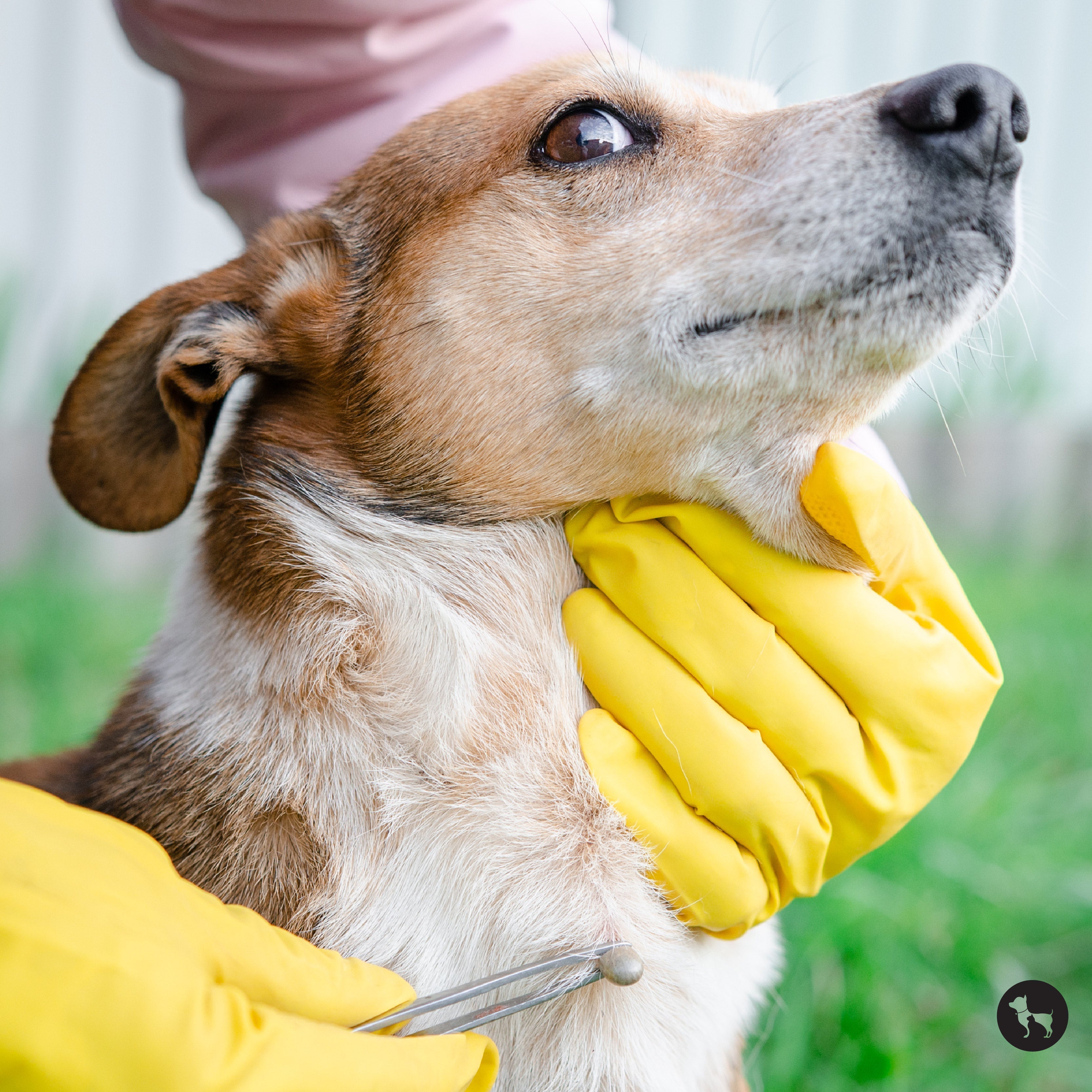
Ticks may be tiny, but they can pose serious health risks to your dog. These parasites latch onto the skin and feed on blood, often going unnoticed until they have caused discomfort or passed on harmful infections like Lyme disease or tick fever. That is why spotting them early and knowing how to take a tick off a dog safely becomes extremely important.
In this blog, we will walk you through the safest, simplest ways to remove ticks from your dog while keeping them calm, comfortable, and protected.

Ticks are small, blood-sucking parasites that attach themselves to your dog’s skin, usually hiding beneath the fur. They often look like tiny dark bumps and can feel like a small lump when you run your fingers over the coat. You will usually find them around the ears, neck, under the legs or between the toes.
If your dog is scratching more than usual, licking one spot constantly, or has a red, swollen bump, it might be a tick. Knowing how to remove a tick from a dog can prevent further irritation or infection and keep your dog more comfortable.
Removing a tick from your dog might seem simple, but doing it the wrong way can cause more harm than good. If a tick is pulled out harshly or incompletely, parts of it can remain under the skin and lead to infection.
Squeezing or crushing the tick may also release harmful bacteria into your dog’s body. Since ticks can carry severe illnesses, handling their removal gently and properly is crucial. Using the right technique not only protects your dog from discomfort but also lowers the risk of any tick-borne health issues developing later.

Here are some essential tools that you will need to remove ticks from a dog.
Fine-tipped tweezers or a tick remover tool: Helps grip the tick close to the skin without squeezing its body.
Antiseptic solution or pet-safe disinfectant: For cleaning the area once the tick is removed.
Disposable gloves: Protect your hands from direct contact with the tick.
Cotton pads or a clean cloth: Useful for applying the antiseptic gently.
Sealable container or zip-lock bag: To safely store the tick for identification if needed.
Dog treats: Help keep your dog calm and offer comfort after the process.
Stay calm and put on gloves.
Use a clean tweezer or tick tool to grasp the tick as close to the skin as possible.
Pull upward slowly and steadily.
Don’t twist or jerk, it might break the tick.
Drop the tick in a sealed container or rubbing alcohol.
Clean the bite area and wash your hands.
Monitor the area for a few days for redness or swelling.

Do not squeeze or crush the tick, as it may release harmful bacteria into your dog’s bloodstream.
Never burn the tick with a match or apply substances like alcohol, oil, or petroleum jelly to force it out.
Avoid using sharp objects like pins or needles to dig it out, it can injure your dog’s skin.
Do not pull the tick out too quickly or at an angle, as this might leave parts of it embedded in the skin.
Do not skip disinfecting the bite area after removal, as it helps reduce the risk of irritation or infection.

The area where the tick was attached looks red, swollen, or has pus, this could mean an infection.
You could not remove the entire tick and part of it, like the head or mouthparts, is still stuck in your dog’s skin.
Your dog starts showing signs of illness within days of a tick bite, such as fever, tiredness, loss of appetite, or joint pain.
There are several ticks on your dog, or you keep finding ticks repeatedly despite using prevention.
Your dog is excessively scratching, licking, or whining about the bite area even after the tick has been removed.

Use vet-recommended tick prevention treatments like spot-on solutions, oral tablets, or tick collars regularly.
Schedule routine vet check-ups to ensure your dog is tick-free and up to date on preventive care.
Check your dog’s fur, ears, paws, and neck thoroughly after walks, especially in grassy or wooded areas.
Keep your dog’s bedding, toys, and collars clean and wash them frequently to prevent tick hiding spots.
Timely bathe and groom your dog using HUFT anti-tick shampoos and sprays suited to their coat type.
Tick bites can lead to discomfort and serious health issues for your dog, but with consistent prevention and quick action, they are easy to manage. Staying informed and prepared is the best way to keep your pet happy, healthy, and itch-free.
Explore HUFT’s range of dog-friendly flea and tick control products, from gentle sprays to effective powders. Shop online or visit your nearest HUFT store to keep your pet protected, year-round.